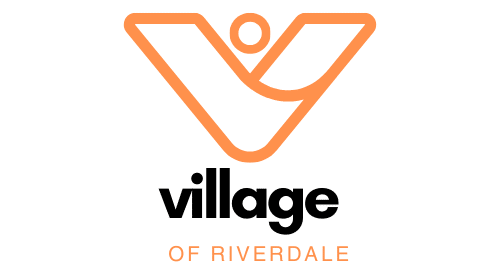What Is the Impact of Olfactory Training on Recovery from Anosmia Post-Viral Infection?

The world has experienced a significant increase in reported cases of anosmia, the loss of smell. It’s become more prevalent in recent times due to the Covid-19 pandemic. Many Covid-19 patients have reported this dysfunction as a prominent symptom, and while most regain their sense of smell within weeks, for others, the recovery is a long drawn process. This brings us to the question – can olfactory training aid in the recovery from anosmia post-viral infection? Multiple studies and reviews, from credible sources like Google Scholar and Crossref, have been conducted to explore this intriguing premise.
The Connection Between Covid-19 and Anosmia
The relationship between Covid-19 and anosmia is an important factor for understanding the need for olfactory training. Covid-19 is not the only viral infection that can result in anosmia, but it has certainly brought this issue to the forefront.
En parallèle : Unlock the meaning of your dreams with this top-rated app
According to numerous studies, about 60% of Covid-19 patients reported anosmia. Initially, this symptom was overlooked. However, as more patients reported loss of smell, researchers began to pay more attention to this peculiar phenomenon. This led to a burst of studies to understand the connection between Covid-19, anosmia, and the potential for recovery.
The reported cases of anosmia are not uniform. Some patients experience complete loss of smell, while others report altered smell perception, a condition known as parosmia. In parosmia, familiar smells may become unpleasant or even intolerable. The longevity of these conditions also varies, with some patients recovering quickly and others taking much longer, leading to a range of patient experiences and recovery timelines.
A voir aussi : How Does Experiential Learning in Nature Impact Children’s Emotional Growth?
The Role of Olfactory Training in Anosmia Recovery
Olfactory training has emerged as a promising strategy for anosmia recovery. It involves a simple, non-invasive process where patients are routinely exposed to specific scents to stimulate their olfactory function.
Notably, olfactory training is not a new concept. Before Covid-19, it was used for patients suffering from anosmia due to other conditions like head trauma or chronic rhinosinusitis. The approach is based on the understanding that the olfactory system has a unique capacity for regeneration and plasticity, which means that it can be trained or retrained to improve or restore function.
Several reviews and studies from Google Scholar and Crossref suggest that regular and prolonged olfactory training significantly improves the chances of smell recovery. It can even help improve parosmia. However, the effectiveness may vary from patient to patient and depends on various factors, including the severity of anosmia and the patient’s adherence to the training program.
The Scientific Backing for Olfactory Training
The scientific community’s interest in olfactory training for post-viral anosmia recovery has seen a significant surge during the Covid-19 pandemic. Several studies have been undertaken to establish the effectiveness of this approach, and the results are quite encouraging.
A study published in the Journal of Otolaryngology reported that patients who underwent olfactory training showed faster and better recovery compared to those who did not. They concluded that olfactory training should be recommended for all patients who suffer from anosmia post-viral infection.
Another study found that patients who carried out olfactory training for a longer duration experienced better smell function. These studies provide a strong scientific basis for the use of olfactory training in anosmia recovery.
The Practical Aspects of Olfactory Training
Implementing olfactory training is not a complex process and can be done at home. It involves smelling at least four different scents twice a day for several months. The scents typically include a range of smells to stimulate different olfactory receptors – for example, floral, fruity, aromatic, and resinous.
The key to olfactory training is consistency. It is recommended that patients maintain a routine and carry out the training even if they do not notice immediate improvements. Recovery can take time, and improvement may be gradual.
While olfactory training has shown promise, it is not a magic cure. It is a part of the recovery process and should be coupled with a healthy lifestyle and regular medical check-ups. It’s also important to note that olfactory training is not a substitute for seeking medical attention.
In conclusion, olfactory dysfunction has emerged as a prominent symptom in Covid-19 patients, with varying degrees of severity and duration. Olfactory training offers a promising strategy for facilitating recovery from anosmia, backed by a growing body of scientific evidence. However, more research is needed to understand the long-term implications and to optimize the training protocols.
Understanding the Basics of Olfactory Function
Before diving into the specifics of olfactory training, it’s important to have a basic understanding of the olfactory function and its role. The olfactory function is essentially our sense of smell, and it plays a significant role in our daily lives. From enjoying the aroma of a freshly brewed cup of coffee to sensing potential dangers like smoke from a fire, our olfactory function greatly contributes to our overall sensory experience.
Disruptions to this function, such as olfactory loss or dysfunction, can have a profound impact on a person’s quality of life. Olfactory dysfunction is characterized by the inability to identify and differentiate smells. It can be caused by various factors, including aging, head trauma, neurodegenerative diseases, and most notably, viral infections, including SARS-CoV-2, the virus behind the Covid-19 pandemic.
Google Scholar and Crossref PubMed have documented numerous instances of post-viral olfactory disorders, reinforcing the fact that these dysfunctions are a common aftereffect of viral infections. As such, the potential for olfactory recovery post-viral infection is a hot topic of research.
For patients suffering from post-viral anosmia, olfactory training has emerged as a promising rehabilitation technique. Leveraging the brain’s plasticity, it aims to stimulate and retrain the olfactory function in order to regain the sense of smell.
Analyzing the Meta-Analysis of Olfactory Training Studies
A meta-analysis, as documented on Google Scholar and Crossref PubMed, provides a wealth of information about the efficacy of olfactory training in anosmia recovery. A meta-analysis is a statistical procedure for combining data from multiple studies to generate more robust conclusions.
One such meta-analysis of 13 studies involving post-viral anosmia patients showed a significant improvement in olfactory function after olfactory training. This bolsters the idea that olfactory training is indeed a viable therapeutic option for anosmia post-viral infection.
The meta-analysis also revealed that the benefits of olfactory training were not immediate. Patients had to persist with the training for several months before experiencing significant improvement. It further suggests that the duration of training and the patient’s adherence to the regimen influence the effectiveness of the intervention.
While these findings are encouraging, the meta-analysis also highlights the need for more intensive research, particularly long-term studies to assess the sustainability of the recovery and to determine the most effective training regimen.
In Conclusion: The Potential of Olfactory Training
The Covid-19 pandemic has underscored the connection between viral infections and olfactory disorders. Anosmia, a symptom experienced by many Covid patients, has become a significant area of research. With the aid of resources like Google Scholar and Crossref PubMed, researchers are exploring the potential of olfactory training as a therapeutic approach for anosmia recovery.
Olfactory training leverages the plasticity of the olfactory function, allowing it to be retrained and potentially restored. The prospect of such a non-invasive, at-home therapy is promising, particularly given the encouraging results from meta-analysis studies. However, it’s important to stress that olfactory training is not an immediate cure. It requires patience, persistence, and a commitment to a regular regimen.
A healthy lifestyle and regular medical check-ups are fundamental to the recovery process. Olfactory training should be viewed as a component of a holistic approach, and not as a substitute for professional medical advice. As it stands now, olfactory training shows promise, but further research is needed to optimize its potential and understand its long-term effects fully.
